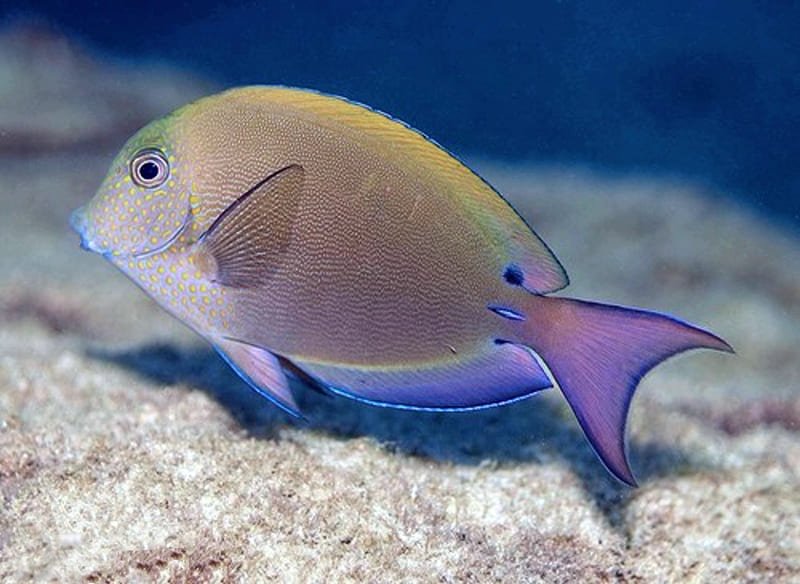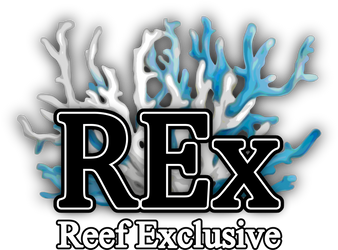
Lavender Tang (Acanthurus Nigrofuscus)
Size: S,M
Species Name : Acanthurus Nigrofuscus
Care Level : Easy
Temperament : Semi-aggressive
Color : Black, Orange, Purple, Tan
Diet : Herbivore
Reef Compatible : Yes
Water Conditions : sg 1.020-1.025, 72-78° F, dKH 8-12, pH 8.1-8.4
Max. Size : 8"
Origin : Indo-Pacific and Hawaii
Family : Acanthuridae
Minimum Tank Size : 125 gallons
Acanthurus Nigrofuscus, also known as the Lavender Tang, Brown Tang, or Spot-cheeked Surgeonfish, is a tang from the Indo-Pacific and Hawaii.
The Lavender Tang has a disk shaped body, very similar looking to other Acanthurus species. Adult coloration varies from a brown to a light grayish brown featuring a lavender color on the fins. When stressed or displaying aggression, its entire dorsal fin and upper back lighten in color, sometimes becoming noticeably yellow. Also featuring blackish brown lips, its pale pectoral fins are narrowly edged in black, and at times, the anal fin is narrowly edged with white, with a crescent shaped caudal fin. On each side of the caudal peduncle is a single spine or "scalpel" used for defense or dominance, hence the Surgeonfish reference. The spine is folded down into a groove that is circled in black when not in use. Juveniles are brown to bluish black and have orange scribbles on the head that break up into spots as they mature. An adult Lavender tang can reach a size of approximately 8″.
A 125 gallon aquarium or larger is necessary to provide plenty of swimming room. Live rock is preferred by this species for grazing, and will provide plenty of structure for hiding places and territories. The Lavender Tang requires a tank with a moderate to heavy flow, creating currents to swim in.
Typically, a Lavender tang will not conflict with other tank-mates unless they have a similar body shape or feeding behavior. However, Acanthurus often have issue with conspecifics (including other species within the genus) and even other tangs. If you want to house various types of tangs together, especially multiple Acanthurus species, it is best to add them all at once, or closely together at the very least, for the best success. Tangs will also be more peaceful if there is a steady supply of algae for them to eat.
The Lavender Tang has not been bred in the home aquarium.
The Lavender Tang is an herbivore that grazes primarily on benthic algae. Although Tangs will eat meaty foods along with the other fish in the aquarium, it is important that they are offered plenty of marine based seaweed and algae. This will strengthen their immune system, reduce aggression and improve their overall health. Offer dried seaweed tied to a rock or use a veggie clip, and feed at least 3 times per week.
Size: Small: 1-1/4" to 2-1/4" ; Small/Medium: 2-1/4" to 3-1/4" ; Medium: 3-1/4" to 4-1/4" ; Medium/Large: 4-1/4" to 5-1/4"
